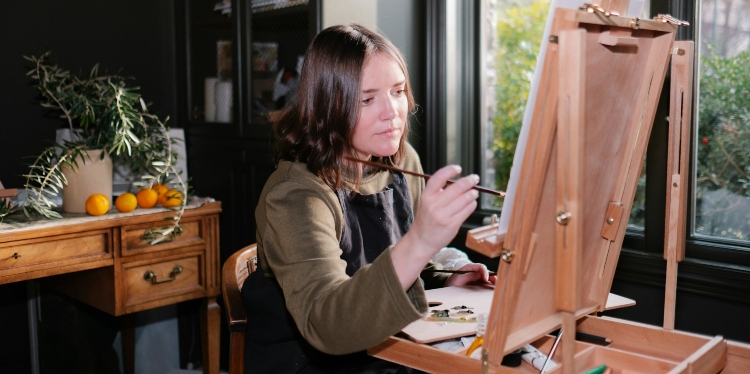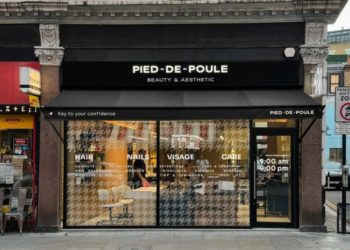The relationship between art and mental health has been recognised for centuries, with creativity often serving as a tool for both self-expression and emotional relief. In recent years, numerous studies have confirmed that engaging in artistic activities can have a positive impact on mental well-being, providing benefits such as:
- Reducing anxiety
- Improving mood
- Fostering a sense of accomplishment
- Boosting self-esteem
- Encouraging mindfulness
From drawing and painting to sculpting and lino printing, the act of creating can help people find a sense of peace and purpose that is often hard to come by in everyday life. Engaging in art can act as a form of emotional release, allowing individuals to channel their inner thoughts and feelings into something tangible. This process can be especially beneficial during difficult times, helping people to cope and find meaning when faced with challenges.
The Healing Power of Creative Expression
Engaging in artistic activities allows individuals to express feelings that might otherwise be difficult to articulate. Creating art provides a channel for emotions that can be overwhelming or unclear, making it easier to process challenging experiences. The simple act of:
- Putting paint on canvas
- Carving a design into a lino block
- Moulding clay into a form
can be deeply meditative, encouraging the creator to focus on the present moment and escape negative thought patterns. The therapeutic qualities of art are not only about the finished piece but also the process itself, which can provide a calming and grounding experience. This meditative process has similarities to mindfulness practices, where the focus on repetitive movements and sensations helps to quieten the mind.
In addition to being a form of emotional release, creative expression can help bring clarity to complex emotions. For instance, abstract painting can be a way for someone to represent feelings of confusion or turmoil that might be difficult to put into words. By visualising these emotions, individuals can gain a better understanding of their inner state and feel more in control. Art can also serve as a visual diary, allowing people to look back on their creations and see how their emotional landscape has changed over time.
Art as a Means of Connection
Art also has the power to foster connections, both within oneself and with others:
- Joining a workshop or a community group dedicated to art can help alleviate feelings of loneliness and isolation, providing a shared purpose and a sense of belonging.
- Practising art solo allows individuals to connect with their own emotions in a unique way.
- Sharing art with others can spark conversations and foster empathy.
It creates a space where they can:
- Explore their feelings
- Navigate complexities
- Celebrate moments of joy
- Connect with others on a deeper level
Participating in group art activities, such as collaborative murals or community art projects, can strengthen social bonds and foster a sense of unity. These activities provide an opportunity to work towards a common goal, which can enhance feelings of support and camaraderie. Art allows people to communicate beyond words, bridging gaps that language cannot always fill, and bringing individuals together regardless of their background or personal experiences.
Building Resilience Through Artistic Practice
One of the most significant benefits of engaging with art is its ability to build resilience. Artistic practice is often full of trial and error; sometimes, a project doesn’t go as planned, and adjustments are necessary. This process teaches:
- Adaptability
- Patience
- Acceptance of imperfections, both in their work and in their lives
- Problem-solving skills
The resilience gained through artistic experimentation translates to better coping mechanisms when facing real-life challenges. Every time an artist encounters a mistake and finds a creative way to move forward, they are practising resilience. This ability to see challenges as opportunities for growth can extend beyond art and help individuals navigate personal and professional difficulties more effectively.
Additionally, engaging in art can provide a sense of purpose, which is a crucial element in building resilience. Having a creative project to work on can give individuals something to look forward to and invest in, especially during times when other aspects of life might feel out of control. The sense of satisfaction that comes from completing a piece of art, regardless of its perceived quality, reinforces the idea that progress is possible, even in small steps.
Lino Printing: A Calming Creative Pursuit
Among the various forms of art, lino printing has gained popularity for its simplicity and accessibility. The rhythmic process of carving and inking can be incredibly soothing, offering both beginners and experienced artists a productive way to unwind. Using materials like Caligo Safe Wash Relief Ink can make the process even more rewarding, as these inks are:
- Easy to clean up
- Safe for home use
- Environmentally friendly
This reduces the stress often associated with traditional printmaking materials. Many people find that experimenting with different inks and tools adds an element of playfulness, encouraging them to:
- Explore
- Experiment with new techniques
- Express themselves without inhibition
The act of carving into a lino block requires focus and precision, which can help to shift attention away from worries or stressors. The tactile nature of lino printing, from the feel of the carving tools to the texture of the ink, engages the senses and encourages a deeper connection to the creative process. This sensory engagement can be particularly beneficial for individuals who struggle with anxiety, as it helps ground them in the present moment.
For those interested in getting started, having the right printmaking supplies can make a world of difference in making the creative process enjoyable and fulfilling. Whether working with lino printing tools, paints, or other mediums, the key is to find materials that inspire and suit one’s personal style. Investing time in setting up a comfortable and inviting workspace can also enhance the experience, making it easier to get into a creative mindset and fully enjoy the process.
The Science Behind Art and Happiness
Scientific research has repeatedly shown that engaging with art can trigger a state of “flow” – a condition in which people become fully immersed in an activity to the point that they lose track of time. This state has been linked to:
- Increased happiness
- Decreased symptoms of anxiety and depression
- Enhanced focus and concentration
Creating art also prompts the brain to release dopamine, a neurotransmitter associated with feelings of pleasure and reward. This means that even a brief creative session can leave individuals feeling more uplifted and energised. In addition to dopamine, engaging in creative activities can also lead to the release of endorphins, which are natural mood elevators. These chemical responses in the brain contribute to an overall sense of well-being and satisfaction.
The positive effects of creating art are not limited to traditional visual mediums. Activities like writing, dancing, and playing music can also induce a state of flow and promote happiness. The key is to find an artistic practice that feels enjoyable and rewarding, rather than focusing on the end result. When individuals approach art without judgment or expectations, they are more likely to experience the joy and fulfilment that comes from pure creative expression.
Art as Self-Care
Incorporating art into daily life can serve as an essential act of self-care. It doesn’t require grand gestures or professional skills; simply sitting down with a sketchbook or experimenting with colours can be an easy yet powerful way to take a break from the stresses of life. The joy derived from seeing a creation come to life, no matter how simple, provides a sense of achievement that contributes to overall happiness and well-being.
Art has an incredible capacity to:
- Heal emotional wounds
- Uplift the spirit
- Connect people with themselves and others
- Provide an outlet for self-expression
- Foster relaxation and mindfulness
Whether it is through painting, drawing, or lino printing, engaging in creative activities can serve as a valuable tool for maintaining mental health and nurturing happiness. By integrating art into regular routines, individuals can create a space for self-reflection, emotional expression, and relaxation. This practice can become a cherished ritual that provides stability and comfort, especially during challenging times.
Even small, consistent acts of creativity can have a profound impact on mental well-being. The sense of empowerment that comes from creating something unique, the opportunity to explore one’s imagination, and the ability to communicate emotions through a visual medium all contribute to a richer, more fulfilling life. Art is not just about the finished product; it is about the journey, the exploration, and the joy found in each moment of creation.
David Prior
David Prior is the editor of Today News, responsible for the overall editorial strategy. He is an NCTJ-qualified journalist with over 20 years’ experience, and is also editor of the award-winning hyperlocal news title Altrincham Today. His LinkedIn profile is here.












































































